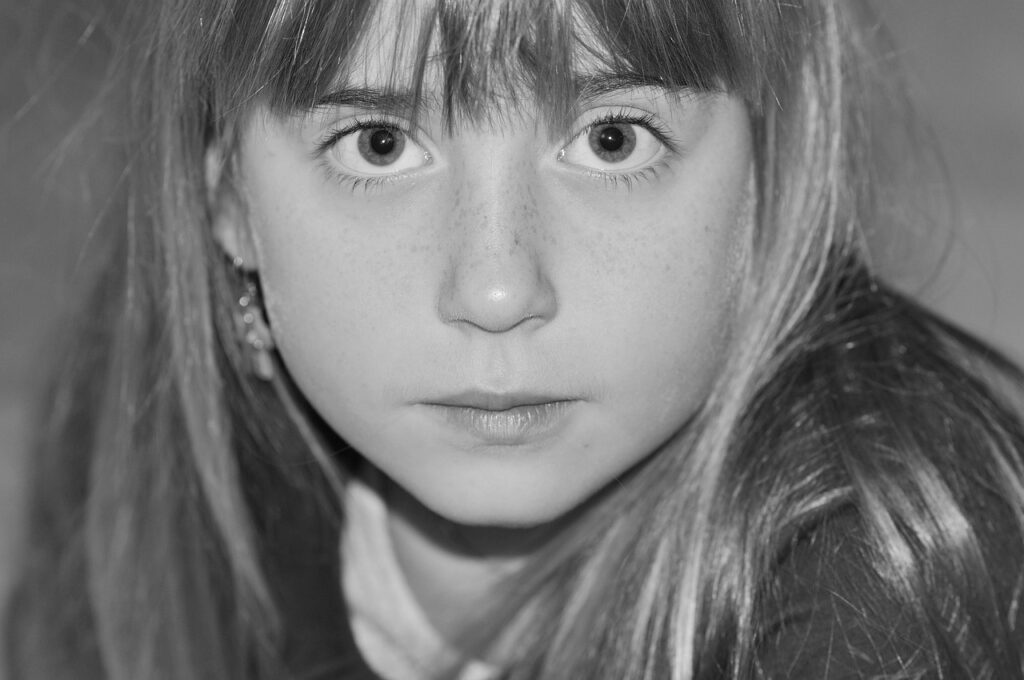Do You Want To Control Your Child’s Mind?

“Give me a child until he is 7 and I will show you the man.”
Aristotle (also attributed to St. Ignatius Loyola, founder of the Jesuits)
“The Child is father of the man.”
Wm. Wordsworth
(Or the woman). Even our lexicon has a subconscious, hypnotic influence, the “he” being more prevalent and important than the “she”.
Are you a hypnotizing your baby? Were you hypnotized as a baby?
From the moment a person is first touched at birth, the world is interpreted as safe, warm, and welcoming, or not. The way we are held imprints upon us. Are we clutched too tightly? Is the grasp one of fear? Are we supported? Are we embraced? Is the person holding us expressing ease? Love? Disappointment? Anxiety? Non-verbal communication is the first way the child learns about the world.
In the first seven or so years of life the child is pretty much a sponge absorbing all the surrounding influences, storing them in subconscious, even cellular memory, and eventually imitating many of them. The child is wide open with no defense against your influence.
The THETA brain wave state of deep relaxation and a detached awareness typical of the young child is ideal for hypnosis. Up to about age seven, based on brain wave studies of the developing brain, predominant wave frequencies gradually increase from the Theta range (hynogogic state) to the ALPHA range (meditative state).
Theta waves in children’s waking electroencephalogram resemble local aspects of sleep during wakefulness (nih.gov)
Now, the hypnotist—in this case, non-professional YOU, or the non-professionl others in the child’s environment—can easily deliver suggestions by reaching into the infant’s subconscious brain, accessing it, and programming their pattern-making systems. You’ve put your suggestion into the subconscious, and, Voila! – the output will be perceptions, thoughts, beliefs, attitudes, habits, and actions that represent you!
What makes it even more incredible is that you are probably not consciously hypnotizing your child. You are subconsciously programming the child’s subconscious from your own subconscious programming that was passed down to you, etc, etc.
It’s unlikely the typical parent would intentionally hypnotize their own child. But that is what is happening generation after generation, conditioned by the beliefs, standards, attitudes, behaviors, expectations, and expressions of their family, culture, and society. Even schools sometimes get a shot at it, usually from ages four to seven, and daycare centers even earlier.

Some researchers believe that the Theta frequency in infants might function closer to what the adult brain does in Alpha. Regardless, even a light trance (Alpha) can work, though the deeper trance level (Theta) is ideal for hypnotic suggestion to work. The the Alpha-Theta border is most commonly found in a hypnotized subject.
Add to that the natural imitative ability of children that is essential for learning, and you have an even fuller, deeper influence on the very susceptible infant and child. What power you have!
Will your child have your accent? Inflection? Vocabulary? Will the child mimic your posture, movement, healthy or unhealthy habits? Will your child pay attention to the same things to which you give a lot of attention? Will your child share your beliefs about anything? Most things? Everything? Are you unconsciously fostering gender roles, ethnic and racial biases?
Most people are aware of cycles of violence where the abused child of the abusive parent grows up to be yet another abuser.
Dad watches pro football so junior watches it too. Dad yells at the TV while watching pro football. Dad gets angry. Dad is elated when his team wins, dejected when it loses. His children, especially his son, most likely mimic. Mom yells racial slurs at the cashier at the supermarket. Her children, especially her daughter, most likely mimic her.
Like the song says, “You’ve got to be taught to hate and fear. It has to be drummed in your dear little ear. You have to be carefully taught.”
But are there cycles of kindness and compassion?
Dad takes time to play with his children, reads to then, ask about their interests. The children most likely mimic him.
Of course, it’s not that simple. Still, there’s a lot of truth to it, and sometimes it’s significantly more powerful than many of us know.
And it’s not just the formation of ethics and morals, however important, that are passed down from generation to generation.
The very fundamental ways that a person perceives the world is formed in these early years. Perception isn’t just thoughts. It’s what we attend to, where we look, what we listen for, our tastes, the nature of our touch, and the kind of touch we seek. It’s about our preferences, our physical, emotional, and cognitive comforts and discomforts. It’s what we accept as “normal” and “appropriate” or “abnormal” or “inappropriate” (also defined is “different”, “foreign,” “weird”, etc). The first seven years define what is acceptable or unacceptable. These are the habits, patterns, attitudes, interpretations, and expectations that are likely to remain for an entire lifetime unless we make the conscious effort to change them.
_______________________________________________
“….we show that adults and 7-month-olds automatically encode others’ beliefs, and that, surprisingly, others’ beliefs have similar effects as the participants’ own beliefs. “
https://pubmed.ncbi.nlm.nih.gov/21205671/
“…2.5‐year‐olds are susceptible to suspense and express tension when others’ false expectations are about to be disappointed. In two experiments (N =32 each), children showed more tension when a protagonist approached a box with a false belief about its content than when she was ignorant. In Experiment 2, children also expressed more tension when the protagonist’s belief was false than when it was true. The findings reveal that toddlers affectively anticipate the “rude awakening” of an agent who is about to discover unexpected reality. They thus not only understand false beliefs per se but also grasp the affective implications of being mistaken. “
https://srcd.onlinelibrary.wiley.com/doi/abs/10.1111/cdev.12581
_____________________________________________
Brain Waves
Brain wave frequencies (Beta, Alpha, Theta, Delta, and Gamma) are measured in cycles per second (Hz). Each frequency range has its own specific level of brain activity, unique state of consciousness, and characteristics.
Beta (14-40Hz). Normal waking consciousness and reasoning. Further divided, high Beta is associated with a alertness, logic, critical reasoning, and focus. Low beta is unfocused, “noisy” thinking that may ranslate into stress, anxiety, fear and restlessness.
Alpha (7.5-14 Hz). Associated with meditation, prayer, mindfulness, as well as deep physical and mental relaxation. Attained, typically, when the eyes are closed, and during daydreaming, imagination, and visualization. Giving access to the subconscious, alpha states are good for programming the mind. In the classroom, the child who cannot focus can be stuck in the alpha state, unable to access the higher frequencies of beta.
Theta (4-7.5Hz). The realm of the subconsciousness. present during hypnosis, deep meditation, and light sleep, and REM dream state.
Delta (0.5-4Hz). Deep, dreamless sleep, necessary for regeneration.
Gamma waves (above 40Hz). Little is known about this recently discovered stateGamma brain waves are associated with bursts of insight and high–level information processing, but, oddly, also associated with PTSD.
- Boy reading to baby video by Keira Burton from Pexels
- Hypnotized girl collage photo by Ron Lach from Pexels
- Girl photo – no attribution
